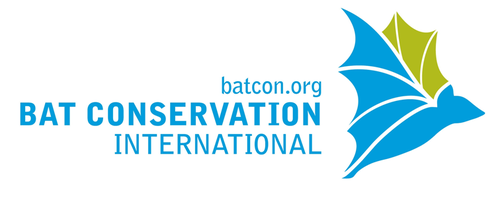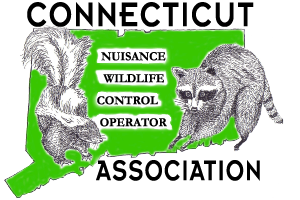Public health importance of rabies:
Over the last 100 years, rabies in the United States has changed dramatically. More than 90% of all animal cases reported annually to CDC now occur in wildlife; before 1960 the majority of cases were in domestic animals. The principal rabies hosts today are wild carnivores and bats. The number of rabies-related human deaths in the United States has declined from more than 100 annually at the turn of the century to one or two per year in the 1990's. Modern day prophylaxis has proven nearly 100% successful. In the United States, human fatalities associated with rabies occur in people who fail to seek medical assistance, usually because they were unaware of their exposure.
Facts About Rabies
Rabies is a fatal viral disease that can affect all warm blooded animals including man. Rabies is primarily transmitted by the bite of infected animals. Rabies may also be transmitted by scratches or when saliva or central nervous system tissue (i.e., brain, spinal cord) from a rabid animal gets into an open wound or mucous membrane (eyes, nose, or mouth). Rabies is not transmitted by contact with urine, feces, blood, or scent glands.
Symptoms of rabies in animals vary, but they often include changes in behavior such as unprovoked aggression, unusual friendliness, paralysis or un-coordination, excessive drooling, disorientation, and aimless daytime wandering. Note that even healthy nocturnal animals such as raccoons are sometimes active during the day, and this behavior should not in itself be reason to believe an animal is sick.
Since 1991, Connecticut has experienced an outbreak of rabies in wild animals. Raccoons are the primary carrier and most commonly affected animal. However, rabies cases in other wild and domestic animals such as skunks, woodchucks, foxes, bats, cats, dogs, horses, sheep, and cows have been reported. Squirrels, rabbits, and mice are seldom affected by rabies. Birds, fish, reptiles, amphibians, and insects do not get this disease.
Rabies Prevention Measures
Homeowners can minimize their risk of exposure (and also the risk to their pets and livestock) by taking the following precautions:
Vaccinate pets and livestock against rabies. Unvaccinated pets represent the greatest risk of rabies exposure to humans and are frequently the link between rabid wildlife and people. If your dog or cat is unvaccinated and exposed to a rabid animal, it must be euthanized or removed from the home and quarantined for six months. The importance of pet vaccinations cannot be overemphasized! Do not allow pets to roam freely. Keep them closely supervised, feed them indoors, and confine them at night. If your pet is exposed to a suspected rabid animal, wear gloves when handling it or treating its wounds. Contact a veterinarian for advice. Your local police, animal control officer, or NWCO can help identify, capture, or destroy the suspect animal for testing.
Avoid contact with wild or stray animals. Report animals behaving suspiciously to your local police or animal control officer. Never attempt to feed, pet, or handle wild animals or strays. It is illegal to keep any wild animal as a pet, and doing so will increase your risk of exposure to rabies and other diseases. To discourage wildlife from living in or around your home, cap chimneys, screen crawl spaces, and repair openings into buildings. This also includes securing potential food sources (garbage cans, pet or livestock food, and even birdseed).
If you are bitten, scratched, or think you have been exposed to rabies, wash the exposed area thoroughly with soap and warm water and contact your doctor or emergency clinic immediately. If possible, without further risk of exposure, capture or destroy the wild animal without damaging its head, and immediately report the incident to the local police or animal control officer. If you are unable to contact local authorities, call the State of Connecticut Department of Environmental Protection Wildlife Division at 860-424-3333 for guidance. NWCOs may also be able to assist with human exposure cases by capturing suspect animals and assisting with transport for rabies testing. Note that treatment for rabies exposure is highly effective if administered promptly and consists of a series of six relatively painless injections.
Nuisance Complaints Involving Rabies-Prone Species
The trapping or removal of rabies-prone species by NWCOs is encouraged only if the animal is causing property damage or if there is a high probability of contact with humans or domestic animals. Homeowners are prohibited from trapping or shooting wildlife unless the animal has been actively causing property damage or is an obvious threat to public safety. Shooting of wildlife under such circumstances must still comply with local firearms ordinances. Live trapping and relocation of certain rabies-prone species (raccoon, skunk, fox) is prohibited under Connecticut General Statutes Section 26-57. This restriction is necessary to reduce the spread of disease and to minimize the negative consequences associated with wildlife relocation. Relocation of wildlife may transfer the original problem to someone else, subject the relocated animal to increased stress and mortality, and disrupt wildlife populations native to the relocation area. Using more effective and permanent controls such as animal proofing methods and eliminating wild animals' access to food and shelter should be emphasized.
Additional Rabies Information May Be Obtained from the Following Sources:
Human Exposures
CT Dept. of Public Health / 860-509-7994
Questions regarding human exposures should be directed to local Departments of Health,
private physicians, or the Connecticut Department of Public Health
Domestic Animal Exposures
CT Dept of Agriculture
Animal Control Division / 860-713-2506
Notify your local Animal Control Officer or veterinarian
Wildlife Behavior
CT Dept. of Environmental Protection
Wildlife Division / Routine: 860-424-3011
Law Enforcement Division / Emergency: 860-424-3333
Rabies Testing
Animals that have exposed humans or domestic animals
CT Virology Lab / 860-566-4776
Sick Animals with no known exposure history
UCONN Animal Diagnostic Lab / 860-486-3738





